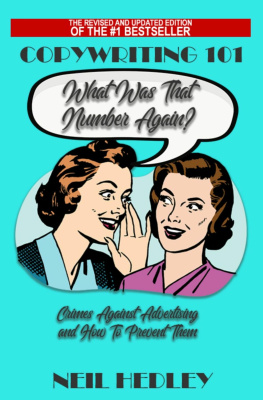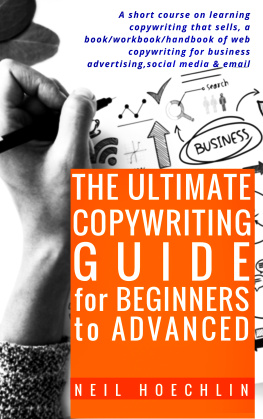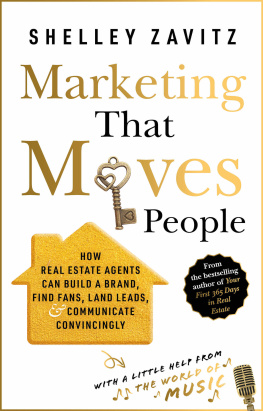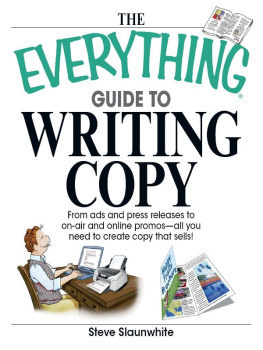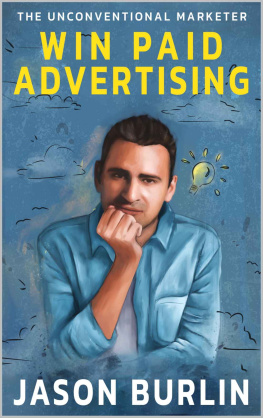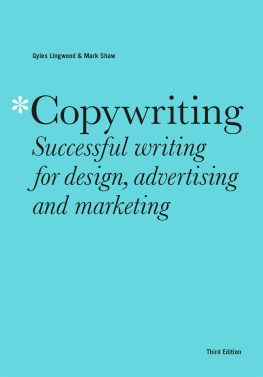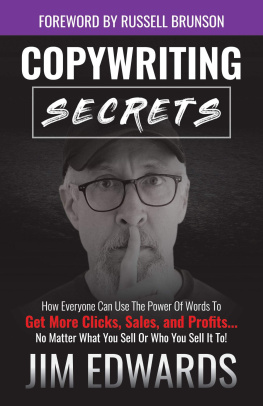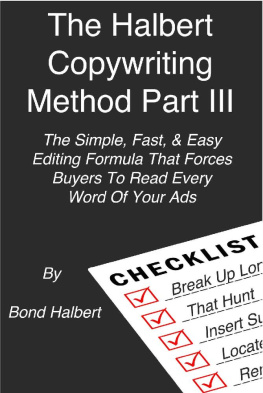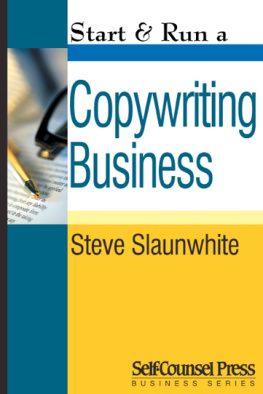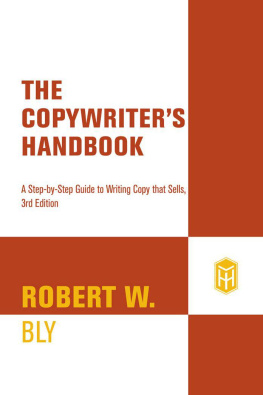All rights reserved. No part of this book may be reproduced in any manner whatsoever without written permission except in the case of brief quotations embodied in critical articles and reviews.
When it was first conceived in 2011, What Was That Number Again was intended to be a 150-page business card. I was considering the idea of taking on a limited number of clients as a consultant and copywriter but wanted to have a vision statement of sorts, so that prospective creative partners would have a clear picture of my thought processes, my philosophies and, by extension, my expectations.
What ended up happening instead was that my business card became a #1 Bestseller. A series of invitations followed to speak in front of Chambers of Commerce, as did media appearances as one of those talking heads that gets to weigh in on things like SuperBowl commercials, and a rewarding experience that allowed me to create the curriculum for a post-graduate writing program at one of the most highly respected college programs for radio broadcasting in North America.
As the tenth anniversary of the originals release approached, I learned that it was still being carried in some college libraries, and even remained on the reading list in a few others. Just as I couldnt envision allowing the same script to run in a radio commercial for ten years, I decided the content of the book could use a touch-up.
However, as I looked through the pages of the first edition and thought about how many things had changed, I was struck by how many things have also stayed the same. The principles outlined in the first edition of the book are still as sound and as relevant as when they were originally conceived. The legends of the industry are still legendary. And people still buy stuff for the same reasons they always have.
One thing that has exploded in the ten years since I wrote the first edition is that there seem to be more voices than ever, screaming for our attention. Attention is currency. Its why we use the expression, pay attention. Attention is a finite resource; perhaps thats why in many circles it is coveted even more than cash. The pursuit of attention, in its most egregious forms, is why people spend money they dont have on things they dont need and cant afford, in order to get more likes (more attention) on social media. Its why the effort to attract attention leads to people saying and doing things that just seem to get crazier and crazier, even in the face of irrefutable proof of the contrary.
Sadly, however, the explosion of media platforms has meant that virtually everyone has access to the bullhorn, while an ever-shrinking percentage of people have truly taken the time to make deliberate choices about what to do with it based on sound judgment and enduring principles.
One of the most glaringly obvious examples of this phenomenon is so pervasive that its hard to escape: There was a time when, in order to get a job with a news outlet - whether in print, radio, television or otherwise - you had to go to journalism school. Now, it sometimes feels like good looks will get you on TV faster than good grades, and if you lack the credibility to work at a major news outlet, you can simply start your own news channel online, or start your own news website simply by writing a pile of crazy garbage, stamping the word news on it, and wait for fellow crazies to come flocking.
To put it less delicately: More bullhorns equals exponentially more bullshit. In the current media landscape, quality seems inversely proportional to quantity.
The same is true in the advertising world, where people are writing things - and actually having the gall to sell those things - without having a clue what theyre doing.
You paid for this book. (Well, I hope you did. Three-year-olds dont pay for their own groceries.) You paid money, youre spending time and youre paying attention.
Ill do my best over these pages to respect all three expenditures and give your attention the honor it deserves.
Most radio advertising is bland, boring, poorly written, shoddily produced, offers little value for the advertisers investment, and insults the listeners intelligence.
Seth Godin, the Godfather of all modern marketing wisdom, refers to radio and television advertising as interruption marketing. That is to say, were enjoying a particular program when an advertiser barges in, puts a kink in our enjoyment like it was a garden hose, and unilaterally decides that right now is the best time to listen to what they have to say. Theyre not far removed from the drunk at the party who knocks over the cabinet with the stereo equipment in it.
Seth has become an icon in the marketing business (and deservedly so) while predicting - and usually calling for - the death of advertising as weve come to know it. The statistics appear to cheer Seth on; an Edison Media Research/Arbitron study showed that radio stations lose as much as 42% of their audience when an intrusive or annoying commercial comes on.
But it doesnt have to be this way.
WHAT THIS BOOK IS FOR
I mentioned earlier that the ideas expressed in this book led me to be able to create the curriculum for a post-graduate writing course in a heavy-duty college Radio Broadcasting program. I remember those earliest sessions where I tried to convey to the students just how impactful radio used to be . We talked about the biggest moments in radio history, and not just the famous War Of The Worlds broadcast that we'll cover in detail shortly. We talked about the S.W.A.T. team that showed up when a local radio host had himself "assassinated" live on the air as an April Fool's joke; in fact, we covered tons of April Fool's jokes that huge numbers of listeners fell for, including some that didn't just fool people, they caused them to take significant action. We looked at a point in history where, if people saw their favorite radio host walking down the street with Paul McCartney, they might actually pause for a second to think about whose autograph to get first. Several of the students had a hard time envisioning such a scenario, and it was at that point I realized just how important it was to keep some of these ideas in the conversation.
Indeed, as I prepared the audiobook version of this special second edition, I decided early on that because I wouldn't be able to do justice to some of those original award-winning performances, I would include the original commercials themselves. It was then I discovered that due to a variety of circumstances, most of the incredible work that inspired the early days of my copywriting career is just... plain... gone . Collections have fallen victim to disasters and tragedies. Digital archives have gone mysteriously missing. Memories have faded. And in at least one case I'm aware of, a huge chunk of the catalog of one of radio advertising's most legendary figures... was simply thrown in a dumpster.
If you're already an established copywriter who's been practicing your craft for a years already, we're going to cover a lot of stuff you already know. (In my own case, though, I found such refreshers to be helpful for reconnecting to my "why".) But virtually everyone in history who has ever been inspired to pursue any kind of artistic endeavor has had that moment where they really connected with just how much it could mean to them. Every great actor saw a performance that made them realize "that's what I'm meant to do." Every great singer heard a voice that made them think, "that's the way I want to make other people feel." Or, to put it less delicately, I'll quote legendary driving range pro Roy McAvoy, played by Kevin Costner in what might be the greatest golf movie ever made,

